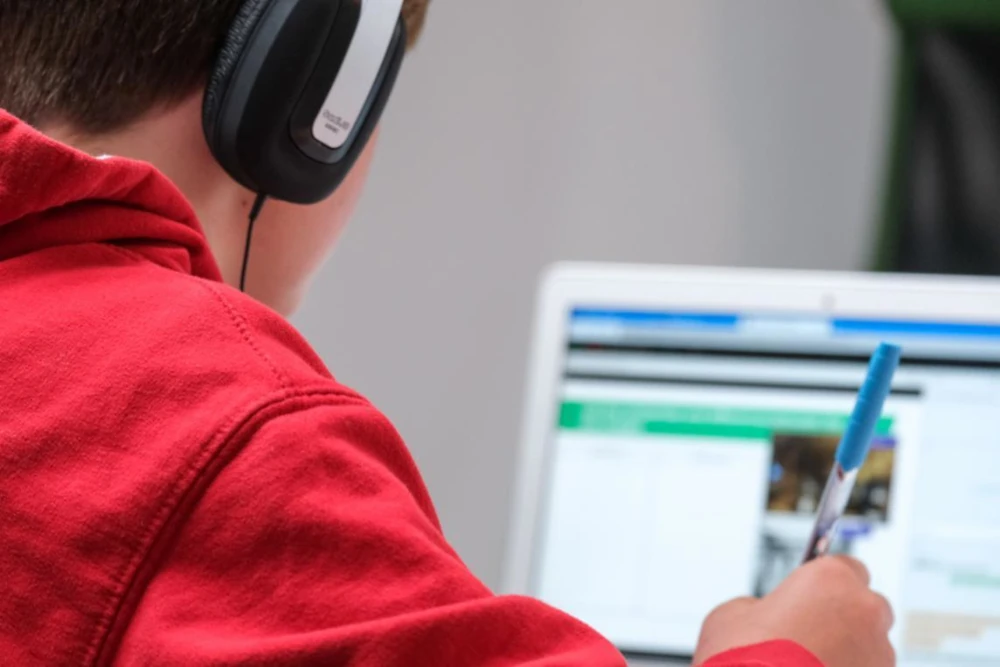Education is set to be transformed by new technology changes. The rise of Artificial Intelligence (AI) and Automation is a big deal. These changes might redefine how we teach and learn. This article explores the ways these changes could shape education. We’re about to enter a new era, making it essential to understand these changes. They could help us improve, transform, or even disrupt current methods of teaching and learning, shaping a new vision for the future of education. You can learn more about it on Pro-Papers.
How AI and Automation Will Change the Student Learning Experience
AI and automation are making a big change in how students learn. In the past, teaching was one-size-fits-all. One teacher, teaching one way, too many students. Today, with AI, each student can have a personalized learning experience. It can adapt to their learning speed, give them extra help on hard lessons, and challenge them on easy ones. It also frees up time for teachers to do more one-on-one teaching. Plus, AI can learn the best teaching methods by analyzing data from many students. As for automation, it can do tasks like grading papers and tracking progress. This saves teachers more time and gives students quicker feedback. All of these things make learning more effective and enjoyable.
Understanding the Impact of AI and Automation on Education
AI and automation are reshaping education. With AI, students and teachers can enjoy a flexible and adaptive learning space. It can tailor learning and teaching techniques to match each person’s mental ability, making sure education is delivered effectively. Automation can handle administrative tasks, giving teachers more time to teach. It can also monitor students’ progress better, pinpointing areas that need improvement. The growth of AI and automation also brings challenges.
The usual classroom setting might die out, making teachers feel sidelined or unappreciated. So, they need to get used to these new technologies. In closing, AI and automation can greatly improve the learning experience, but their effects need to be fully grasped. Both teachers and schools must be ready to use these technologies and tackle their possible issues, guaranteeing a suitable and effective learning experience for future generations. Remember to familiarize yourself with these new technologies. Be prepared to adapt your teaching methods. Learn to use AI and automation to enhance teaching. Monitor student performance efficiently and address areas of improvement swiftly. Embrace the changes in the education landscape. Aim to deliver high-quality, relevant education for the students of the future.

Exploring Future Learning Methods through AI and Automation
As technology continues to improve, our methods of learning are changing too. For example, Artificial Intelligence (AI) and automation are being used in education which could completely change the way we learn. Using AI, lessons can be personalized to fit the specific needs of each student. This allows the system to understand a student’s strengths and weaknesses and adjust future lessons accordingly for a more efficient learning experience. In terms of teachers, automation lightens their workload by handling repetitive administrative tasks such as grading, scheduling, and tracking student’s progress. This leaves teachers with more time for actual teaching. These advancements make education resources accessible anytime, enhancing learning beyond the classroom. It’s important to remember the role of human interaction in learning. AI and automation should be seen as helpful tools, rather than replacements for teachers. Start blending traditional teaching methods with these new technologies. This combination can result in an improved, well-rounded, and forward-thinking learning environment.
The Changing Role of Teachers in a Future Shaped by AI
AI brings many changes to education and teachers have to keep up. Teachers need to do more than just teach. They are expected to be mentors and facilitators. AI could make teachers’ work easier by doing routine tasks like grading. This means teachers can spend more time helping students learn in their way, at their own pace. This approach puts students at the center of their education. Teachers should create space for curiosity and discovery. AI will also allow teachers to check on a student’s progress in real time. This way, they can quickly identify any troubles a student might be having and help them out. Teachers should provide emotional support that helps students feel empowered in their learning journey.
Yet AI doesn’t mean teachers will no longer be needed. It’s simply a tool to help teachers teach better. In the future, teachers should be good at both their traditional teaching skills and using technology. In this new kind of education, teachers have a crucial role. They are the people who make learning happen. They help students get engaged and feel part of a learning community. Their job roles are now more varied, including student engagement, curriculum design, building a school community, and fostering social and emotional learning. Teaching is now more active, engaging, and focused on the learner because of AI.

Successful Examples of AI and Automation in Education
AI and automation are now common in the education industry, leading to big leaps and achievements. Here are some examples: First, look at Thinkster Math, an AI tutoring app. This app uses AI to offer tailored lessons and feedback to students based on their strengths and weaknesses. It follows how a student thinks and tries to solve a problem, then gives immediate feedback, advice, and help. Educators also get updates about the student’s progress. Thanks to this tailored learning path, Thinkster Math has helped students understand better and do well in school.
Second, let’s examine Jill Watson, an AI teaching assistant from the Georgia Institute of Technology. Built using IBM’s Watson platform, Jill was used in an online course. Students asked Jill questions about the course material through the course’s online forum. Jill could answer the students’ questions accurately within minutes, giving almost instant help. By the end of the course, student participation had grown a lot, and many didn’t even know they’d been talking with an AI. Consider the AUTIT project at the University of Aizu, Japan. The goal was to automate university timetabling, a hard job with many factors and variables. The University used automated formulas to cut the boring manual work, which made things run smoother and saved time for staff to do more important work. In closing, AI and automation in education have shown many benefits, from tailored tutoring to running things smoother in administration. The success of these examples suggests we could use it a lot more in the future, paving the way for an engaging, effective, and productive learning environment.
Concluding Remarks
The future of education technology is very promising and has a lot of potential. Using tech like AI and automation can change the way we learn and teach. They can make learning materials that fit personal learning styles, urge critical thinking, and give immediate feedback. High-tech education can make learning more tailored, engaging, and useful. We need to plan properly, invest, and train people to use these new methods. This is important to ensure everyone, no matter their background, can access and use them. Shifting from old methods might take some adjustment but accepting AI and automation in education can lead to big improvements. It can shape the future of learning, encourage ongoing education, and prepare future generations for a world where technology is everywhere. So, let’s be open to these changes. Learn and adapt to new technologies. Invest time, money, and resources in appropriate training. Use AI to improve the learning experience. Always make sure it’s accessible to all people. Let’s prepare our future generations for a world filled with technology.


